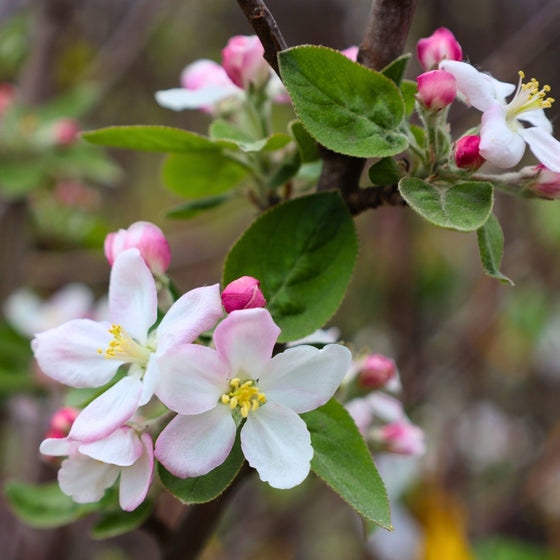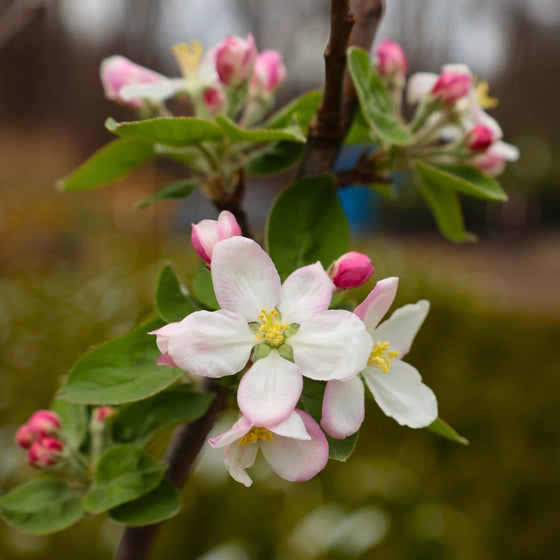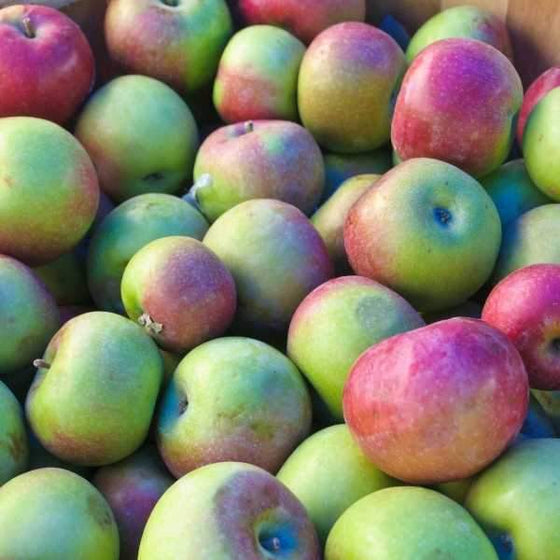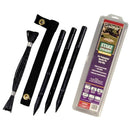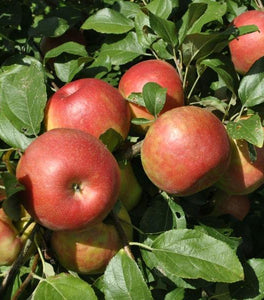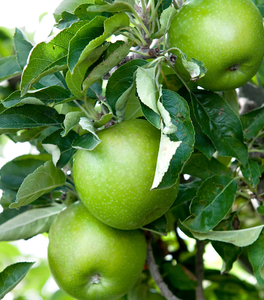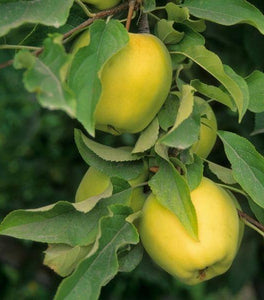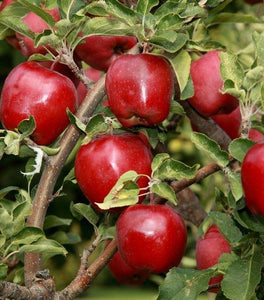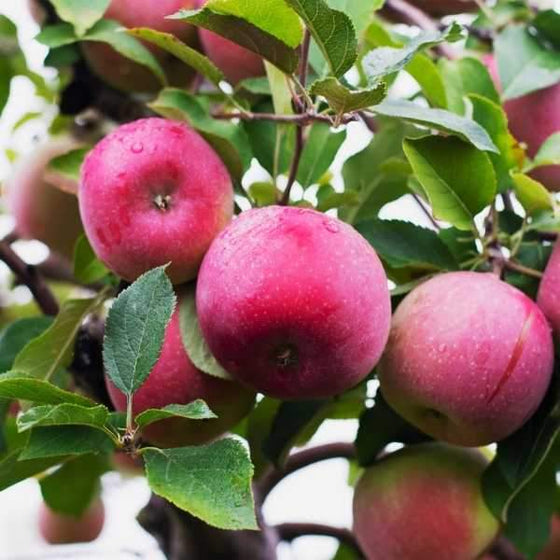
Images Depict Mature Plants
McIntosh Apple Trees for Sale Online
Mcintosh apples are a time-tested variety that has been one of America's favorite Apples since its discovery over 200 years ago. The bright-red apples are a true all-purpose American apple with a crisp and sweet flavor that everyone will enjoy.
McIntosh Apple trees produce bountiful crops of small to medium-sized apples that ripen and are ready for harvest around mid-September. Often, the fruit persists into early winter on the tree. McIntosh Apples are very hardy and can easily withstand the colder temperatures of the north.
McIntosh Apple Trees are not self-pollinating, so you will need to have two trees planted within 50 feet of one another for apple production. The second tree doesn't need to be a McIntosh. Any apple variety will do.
Trivia Fact: Apple, the maker of the iPhone, named their "Mac" computers after the Red McIntosh apple
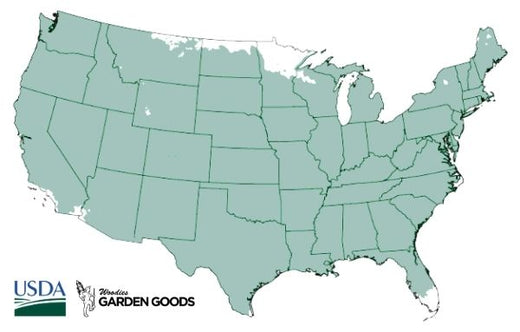
| Hardiness Zone: | 4-9 |
|---|---|
| Mature Height: | 20 feet |
| Mature width: | 15 feet |
| Classification: | Broad leaved deciduous tree, spring flowering |
| Sunlight: | Full sun |
| Habit: | Spreading, umbrella shaped canopy |
| Foliage: | Dark green |
| Fruit Color: | Red over green |
| Pruning Season: | Late winter |
| Soil Condition: | Any well drained soil |
| Water Requirement: | Water well until established |
| Uses: | One of the best apples for eating fresh or storing |
How to Care for McIntosh Apple Tree
Before you buy a McIntosh Apple Tree, make sure to read about the recommended care instructions to keep this plant healthy and thriving.
How do I plant a McIntosh Apple tree?
We suggest when planting your newly purchased McIntosh Apple Trees that you dig a hole twice as wide as the root system but not deeper. Depending on the quality of your existing soil you may need to add a locally sourced compost or topsoil to the back-fill soil. We do not recommend using straight topsoil or compost as a back-fill soil because more times than not these products will retain entirely to much moisture and will cause the root system to rot. Adding compost or topsoil will help the young feeder roots of McIntosh Apple Trees to spread through the loose, nutrient rich soil, much easier than if you used solely the existing soil which more times than not will be hard and compacted. The most common cause of plant death after transplanting is planting the new plant to deep. That is why we do not recommend planting in a hole any deeper than the soil line of the plant in the pot. A good rule is that you should still be able to see the soil the plant was grown in after back-filling the hole.
How much mulch should I use for young McIntosh Apple Trees?
It's a good idea to provide a layer of mulch over the base of your young tree, to help regulate soil temperatures and to protect the roots from resource-stealing weeds. We highly recommend that you mulch your apple tree with either a ground hardwood mulch or a ground cypress mulch depending on your local availability. Cypress or hardwood mulch will be of a higher quality and provide better nutrition overall as they breakdown, but any mulch will do the trick. Mulching helps to keep weeds away which will compete with your new investment for water and nutrients. A 2 to 3-inch layer of mulch is perfect but take care not to cover any part of the actual trunk of the tree. It's better to leave a small 1 inch gap between the mulch and the stem or trunk.
How much Fertilizer do McIntosh Apple Trees require?
Trees such as McIntosh Apple Trees grow best if they are fertilized lightly in the spring once frost has passed with a well-balanced, extended-release, fertilizer such as Espoma Tree-tone. Fertilize Honeycrisp Apple Tree again 6 to 8 weeks later to encourage a heavier fruit set or faster growth of young trees. We recommend Bio-Tone fertilizer when planting. Proper fertilization of your McIntosh Apple Trees will lead to healthier and more disease resistant plants, as well as provide you with many more enjoyable fruits. Always, read the label on your fertilizer bag, and follow the instructions.
How often do I water my McIntosh Apple tree?
After back filling and lightly compacting the 50/50 mix of existing soil and compost give the McIntosh Apple Trees a good deep watering. This is not to be rushed. Most of the water you put on the plant at first will run away from the plant until the soil is soaked. A general rule of thumb is to count to 5 for every one gallon of pot size. For example a one gallon pot would be watered until you count to 5 a three gallon pot would be 15 and so on. Check the plant daily for the first week or so and then every other day there after. Water using the counting method for the first few weeks. Gator Bags are a good investment that will help minimize the watering chore.

